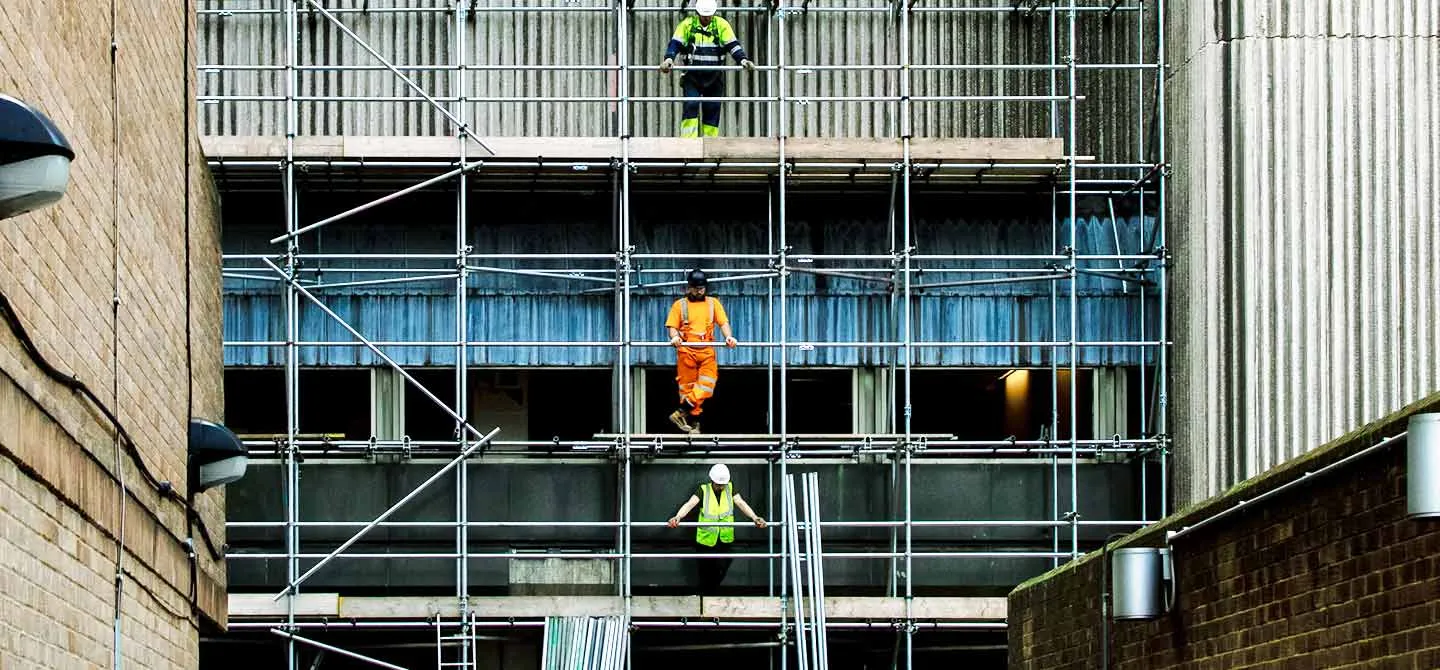The construction industry is a vital part of the global economy, with projects ranging from towering skyscrapers to intricate infrastructure systems. However, as much as construction shapes the physical landscape of our world, it also remains one of the most dangerous industries. With workers frequently exposed to hazardous conditions, accidents, injuries, and fatalities are not uncommon. In response to these alarming statistics, governments worldwide have placed increasing emphasis on safety regulations, aiming to protect the workforce while ensuring the industry operates efficiently and responsibly. Recently, a significant shift has occurred in construction safety laws, ushering in stricter compliance standards. Construction companies are now facing the full force of hefty fines for non-compliance, marking a new chapter in the legal landscape for the industry.
This heightened regulatory focus has far-reaching implications for construction companies, project managers, contractors, and other industry stakeholders. The challenge is not only to comply with these evolving laws but also to navigate the increasingly complex web of regulations that vary by region, scale of operation, and project type. The consequences of ignoring these regulations are severe, with companies risking costly fines, potential legal battles, and a tarnished reputation. In this article, we will explore how the new wave of safety regulations is reshaping the construction sector, and what it means for the companies and individuals working within it.
Historically, construction has always been a high-risk profession. From the use of heavy machinery to the unpredictable nature of construction sites, workers are exposed to various dangers. Despite advancements in technology and the introduction of safety equipment like helmets and harnesses, the industry remains one of the deadliest. According to the U.S. Bureau of Labor Statistics, construction-related fatalities consistently make up a large portion of occupational deaths each year. This stark reality is a driving force behind the surge in safety regulations.
Governments and safety organizations around the world have responded to the growing number of incidents with more rigorous guidelines, safety checks, and reporting requirements. These regulations are designed to minimize risk, prevent accidents, and provide a safer working environment for employees. They also seek to establish a clear framework for how construction projects should be executed from a safety standpoint, ensuring that companies understand their responsibilities in protecting workers.
The rise in regulatory stringency can be attributed to several factors. Firstly, the construction industry is under constant scrutiny by both the public and regulatory bodies. Workers and their families, as well as the general public, demand accountability from construction companies. Secondly, the financial consequences of accidents have become untenable. Injuries and fatalities lead to workers’ compensation claims, increased insurance premiums, legal actions, and damage to a company’s reputation. As a result, the emphasis on safety regulations is not just about compliance, but about protecting the financial and operational viability of construction companies themselves.
One of the most significant changes in the construction industry has been the introduction of more detailed safety requirements across various stages of a project. These changes include enhanced protocols for worker protection, mandatory real-time tracking of safety metrics, and the implementation of innovative technologies to ensure compliance.
In addition to the traditional safety measures such as personal protective equipment (PPE), new laws now demand the installation of high-tech systems on construction sites. For example, real-time monitoring systems using wearables and GPS tracking are now being utilized to detect unsafe conditions or practices. Workers’ health is closely monitored with sensors that can immediately report any signs of distress, such as exposure to dangerous gases or extreme temperatures. This technology allows supervisors to receive alerts instantly, ensuring they can intervene before a situation escalates into an accident.
Furthermore, construction companies are now required to comply with more stringent guidelines regarding the physical layout of construction sites. The installation of fall protection systems, scaffolding, guardrails, and other safety measures must be completed before work begins at certain heights. The regulations mandate that these systems be tested and approved before they are used, ensuring that they will protect workers from potential accidents.
These changes also encompass the legal requirement for more transparent reporting. Companies must now submit real-time reports of safety incidents, no matter how minor, directly to regulatory authorities. This policy helps authorities track safety trends, monitor compliance, and enforce penalties more effectively. For construction companies, this means that safety incidents can no longer be swept under the rug, and failing to report accidents can result in severe legal consequences.
As safety regulations become more stringent, the penalties for non-compliance have become exponentially more severe. In recent years, construction companies have faced hefty fines for failing to meet safety standards, with penalties reaching millions of dollars. These fines have been specifically designed to deter negligence and promote safer practices across the industry.
For many construction companies, the financial impact of a major safety breach can be devastating. Beyond the fines, companies are also required to cover the costs of litigation, compensation claims, and potentially higher insurance premiums. In some cases, fines are imposed per incident or violation, meaning the cost of a single safety breach can be multiplied depending on the severity and frequency of infractions.
The legal ramifications for non-compliance extend beyond fines. Companies that fail to maintain safety standards are at risk of legal action, both from workers and regulatory authorities. If a worker is injured or killed due to inadequate safety measures, the company may be sued for negligence. Legal fees, court costs, and settlement agreements can further drain a company’s resources, sometimes leading to bankruptcy or the loss of business licenses.
For large-scale projects, where safety lapses are particularly high-profile, the damage to a company’s reputation can be even more damaging than the financial penalties. A publicized safety incident can destroy years of hard work building relationships with clients, contractors, and regulatory bodies. Many potential clients, particularly those in the public sector, will hesitate to award contracts to companies that have a history of safety violations.
In light of the growing threat of fines and legal actions, construction companies must reframe their approach to safety. The introduction of stricter regulations is pushing businesses to adopt a proactive stance on safety, moving beyond compliance to a more holistic, safety-driven culture.
For construction companies to stay competitive and profitable, they must ensure compliance with the ever-evolving safety regulations. This involves investing in cutting-edge safety technologies, continuous training for workers, and rigorous audits to ensure that safety protocols are being adhered to. It also requires a shift in organizational culture where safety becomes a priority at every level of operation, from the top executives to the on-the-ground workers.
Many companies are already responding by implementing new safety management systems, conducting regular safety audits, and providing employees with ongoing training on safety protocols. These efforts are designed to foster a safety-first mentality and avoid the costly consequences of safety violations. Additionally, industry leaders are collaborating with regulatory bodies to ensure that upcoming regulations are not only met but exceeded, setting new standards for the entire sector.
Technology plays a pivotal role in enhancing safety on construction sites. In addition to real-time monitoring systems, AI and machine learning technologies are being used to predict and prevent safety risks before they occur. Drones are being used to inspect hard-to-reach areas of construction sites, while robots are taking over high-risk tasks such as heavy lifting and hazardous material handling. By integrating these technologies into daily operations, construction companies are better equipped to maintain safety standards and reduce human error.
Additionally, construction firms are adopting cloud-based safety management systems that allow for seamless communication between all parties involved in a project. These platforms enable real-time reporting of safety issues, ensuring that corrective actions can be taken quickly and efficiently. Cloud-based systems also provide a centralized location for safety documentation, making it easier to stay compliant with regulatory requirements.
The shift toward stricter safety regulations is having a profound impact on the construction industry. The legal landscape is changing rapidly, with an emphasis on preventing accidents and protecting workers’ rights. Construction companies that fail to adapt to these new laws risk facing hefty fines, lawsuits, and long-term damage to their reputation. However, by embracing safety innovations, improving training programs, and investing in new technologies, companies can ensure compliance, protect their workforce, and secure their future in an increasingly competitive and regulated industry.
Don’t let safety compliance be an afterthought—make it your top priority. Stay ahead of evolving safety regulations and avoid the financial and legal consequences of non-compliance. For real-time news, insights, and updates on the latest construction industry trends, join epci.ng. Stay informed and protected by signing up for our newsletter, and connect with us on WhatsApp or Telegram for live updates. Have a report or article to share? Send it to report@epci.ng. Follow us on X (Twitter), Instagram, LinkedIn, and Facebook for more industry insights.







Leave feedback about this